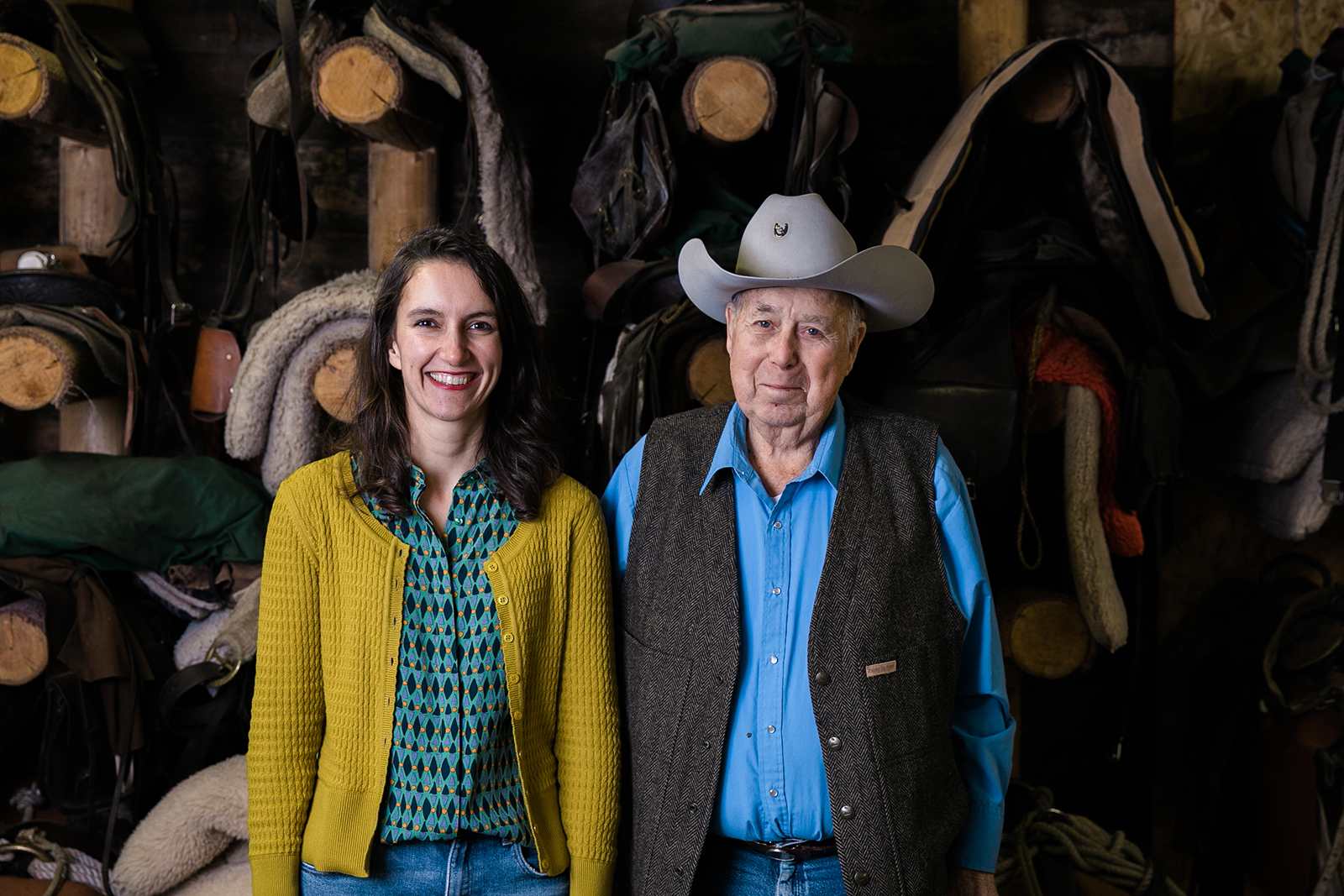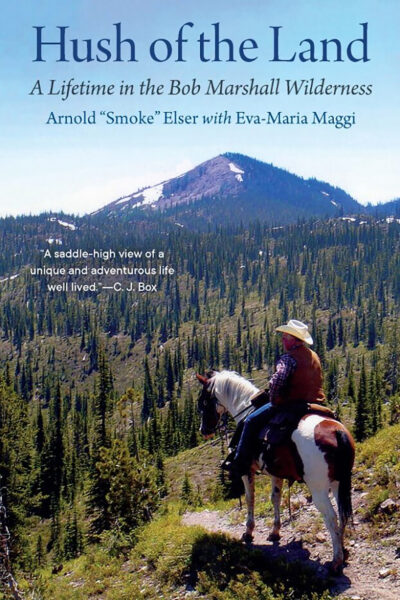Chronicling the Wilderness Act at 60
Legendary outfitter Smoke Elser, 90, and co-author Eva-Maria Maggi, will be on hand to discuss their new book “Hush of the Land” at Flathead Valley Community College on Sept. 3. The memoir traces Elser’s six-decade quest to safeguard the Bob Marshall Wilderness by showcasing its wild interior to thousands of guests.
By Tristan Scott
The idea of bestowing future generations with a rare “glimpse of the world as it was in the beginning,” which is how President Lyndon Johnson articulated the spirit of the monumental Wilderness Act 60 years ago, is a uniquely American invention.
It’s born of a frontier spirit, championed by early advocates with heroic legacies – activists like Bob Marshall, whose lightning-charged passion is considered the impetus for the wilderness preservation movement, and Howard Zahniser, the primary author of the Wilderness Act of 1964, the text of which reads more like a valentine to the nation’s wild, untamed places than a piece of legislation.
It’s also a uniquely Montanan invention, which is why Arnold “Smoke” Elser’s six-decade career as a conservationist, packer and outfitter in the Bob Marshall Wilderness coincides so neatly with the Wilderness Act’s latest milestone. From Elser’s vantage, the Wilderness Act shaped Montana’s landscape more than any other law, protecting 3.5 million acres in the Treasure State (or about 3.75% of the state’s lands) and creating the first formal mechanism for designating wilderness areas under the National Wilderness Preservation System.
Today, there are 758 wilderness areas covering 109 million acres, or 5% of the nation’s landmass. Montana is home to 16 designated wilderness areas. They include the state’s highest peaks, as well as its lowest-lying marshland, wildlife refuges, elk-choked mountain passes, and gin-clear streams, which collectively support thousands of species of flora and fauna, some of them threatened or endangered.
To showcase Montana’s rugged interior, Elser guided thousands of people into the Bob Marshall, their wilderness pedigrees ranging from seasoned adventure-seekers to novice city slickers. He had a front-row seat during the historic Scapegoat Wilderness designation and is still active in a movement that he’s watched evolve from a nascent idea to the stalwart of conservation that it is today.
Not one to keep so profound an experience to himself, Elser has captured the rich history of the Bob and the wild experiences it afforded him with a new memoir, “Hush of the Land: A Lifetime in the Bob Marshall Wilderness” (Bison Books, 2024), which is co-written by Eva-Maria Maggi, the writer and wilderness packer who teaches a course on wilderness policy and packing at the University of Montana in Missoula.

For the book’s title, Elser and Maggi borrowed a phrase from Elser’s mentor, the master-packer Tom “Hob Nail” Edwards, who, during his 1968 remarks to the Montana Legislature on the Scapegoat Wilderness, coined the phrase “Hush of the Land” when he delivered this heartfelt testimony:
“Into this land of spiritual strength I have been privileged to guide on horseback literally thousands of people – the old, many past 70, the young, the poor, the rich, the great and little people like myself. I have harvested a self-sustaining natural resource of the forest of vast importance. No one word will suffice to explain this resource, but let us call it the ‘hush’ of the land. This hush is infinitely more valuable to me than money or my business.”
Compelled by the desire to share that silence with city dwellers, but with limited financial means and while still in college, Elser, originally from Ohio, decided against a promising career in forestry and chose instead to work as a professional outfitter.
In the early days, many of the plans were hashed out over kitchen tables, in community halls and at public meetings, he said. But through the years he’s found that one of the most influential factors in impressing the significance of wilderness on the American public is by leading them off the grid, and by ensuring that young people develop an attachment to wild places.
“In my business, we never made a lot of money. But on every trip I took into the hills I found great satisfaction in being able to take guests from all over the world and take them into a wilderness and interpret that wilderness to them,” Elser told the Beacon a decade ago to observe the Wilderness Act’s 50th anniversary. “The value was our ability to share the wilderness concept with many, many people and have them take that away from the experience. Because of that, I believe wilderness will survive.”
Join Elser and Maggi on Sept. 3 at 6 p.m. for a celebration of the 60th anniversary of the Wilderness Act with an evening of campfire storytelling and a reading from “Hush of the Land” at Flathead Valley Community College’s (FVCC) Arts and Technology building, room 139. Sponsored by the Bob Marshall Wilderness Foundation, Backcountry Horsemen of the Flathead, Montana Conservation Elders, and FVCC’s Natural Resource and Conservation Management Program, the event is free and open to the public.
For more information on “Hush of the Land,” visit www.evamaggi.com.